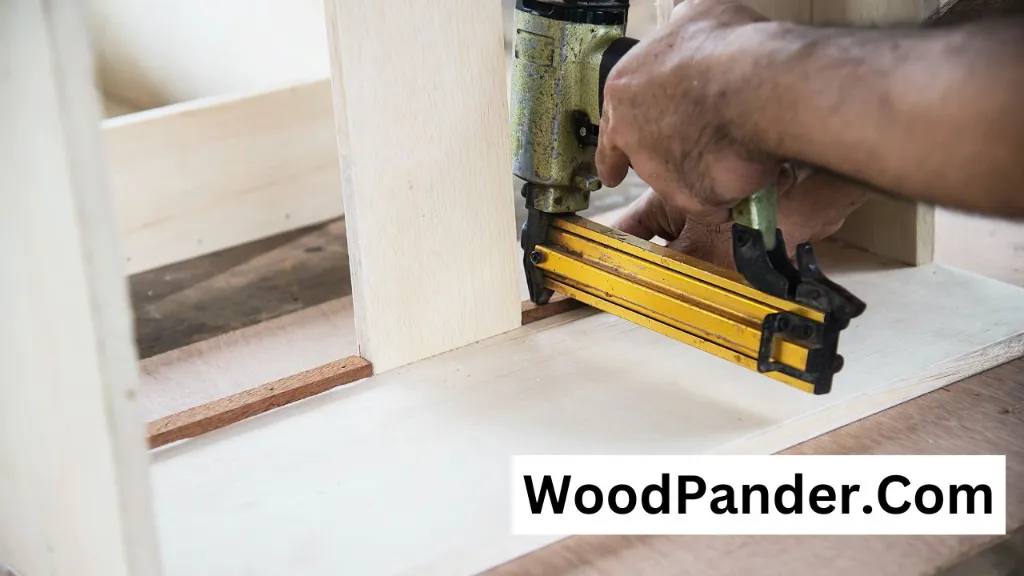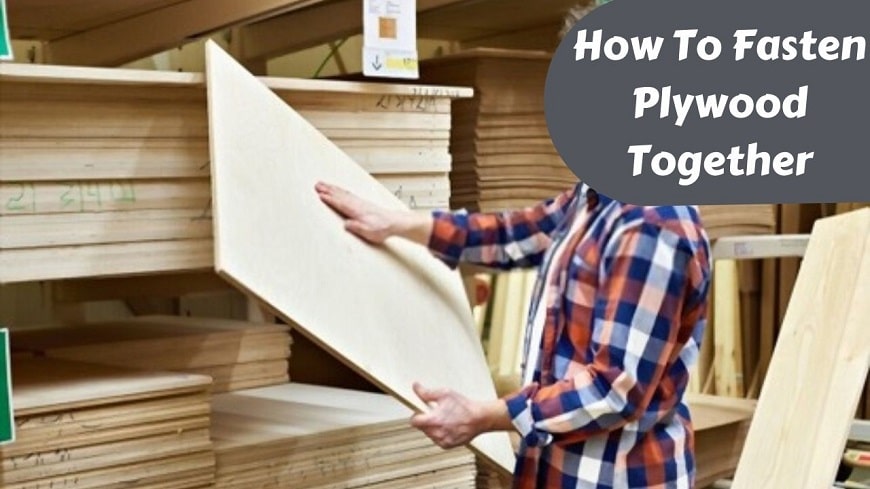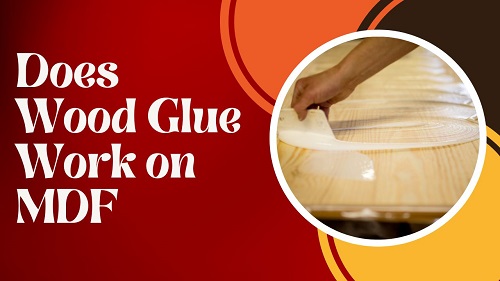Though it is quite time-consuming yet many prefer building furniture without nails or screws and it is possible. Whereas it is easy to use glue or fasteners of different kinds to join the wood pieces, without such materials joining of pieces represents great craftsmanship.
Hence, you can see the difference between carpentry and woodworking. However, there are several joinery methods for making woody furniture that fastens two boards together. Here, you will not need any metal fasteners, nails, or screws. Nonetheless, in some cases, you may need some glue as well for securing the joints properly.
So, to have an elaborate idea, let’s get to the detailed discussion of such joinery methods for building furniture.
| Method | Description | Advantages | Disadvantages |
|---|---|---|---|
| Mortise and Tenon | A joint in which a projecting tenon of one piece fits into a slot (mortise) of the other piece | Strong and durable, aesthetically pleasing | Requires precision in measuring and cutting, time-consuming |
| Dovetail | A joint in which the ends of two pieces interlock with alternating projections (tails) and slots (pins) | Very strong and durable, aesthetically pleasing | Requires precision in measuring and cutting, time-consuming |
| Dowel | A joint in which wooden pegs (dowels) are used to connect two pieces of wood | Strong and durable, easy to assemble | Requires precision in drilling holes, dowels can sometimes slip out of place |
| Tusk Tenon | A variation of the mortise and tenon joint in which a protruding tusk on the tenon is wedged into the mortise | Strong and durable, self-locking | Requires precision in measuring and cutting, difficult to assemble |
| Tongue and Groove | A joint in which a tongue (protrusion) on one piece fits into a groove (slot) on another piece | Strong and durable, easy to assemble | Requires precision in measuring and cutting, limited range of applications |
One of our articles –How to Screw into MDF without Splitting.
Building Furniture without Nails or Screws – Discussion of Methods

Woodworkers use several methods for joining wood pieces without any nails or screws. However, the most effective methods are given below.
- Mortise and Tenon
This is the most used method woodworkers use for decades for making furniture. You will find some workpieces from the ancient period using mortise and tenon methods for joining wood. The technique is durable and highly reliable.
However, it is also the simplest method. Its premise first includes a hole of either square or rectangular shape in one board. This hole is called mortise. Another thing that includes is a tenon which is basically a structure or given outgrowth shape from another wood piece to lock it up into the mortise.
There are some common uses of this wood fastening method like joining chair rails to its legs or securing bed and table. When the two pieces of wood are joined in this mortise and tenon method the product becomes a single piece.
Nonetheless, there are some hand tools that the woodworkers use to make the mortise and tenon. They use chisels, hand saw, marking knife, pencil, sandpaper, and others. However, some modern woodworkers prefer using a tenoning jig or band saw that can perfectly shape the tenon peg.
Again, for making mortise, there are mortisers available. The tool is basically a drill bit that is covered with a box-shaped chisel. However, according to the conventional way, many woodworkers use a router to cut the mortise. And to cut tenons, they use a table saw.
- Doweling
This is another old method of joining wood pieces to make furniture. It is named after the round sticks made out of wood for joining purposes. However, this process is considered comparatively stronger than other wood joining methods.
Additionally, this method is mostly used for making panels, braces, legs, and other places of furniture that would need a wood joint. Surprisingly, dowels make an invisible appearance once they are inserted into furniture.
Moreover, their deep penetrating properties are highly convincing. However, glue is also used to stick the boards and dowels together. Here, dowels deliver lateral strength to the entire furniture. Maintaining the alignment of dowels, however, is a bit tricky.
That is why many woodworkers go for a dowel jig to obtain the perfect alignment and join the boards properly.
- Through Dovetail
Here comes an artistic joining method of woods, ‘through dovetail.’ Using this method, you can make a beautiful piece of art. However, it requires a proper cut and exact assembly. When you are able to achieve them, the final product becomes stronger and more reliable.
Nonetheless, this method is mostly used for building drawers. Again, to obtain tight-fitting joints, woodworkers interlock the number of tails and angled pins. However, in this ‘through dovetail’ method, you can see both the interlocked tails and pins from both sides.
Therefore, woodworkers find it easier to cut while making the pieces attractive as well. Again, the entire piece looks more prominent when woodworkers design it with contrasting wood tones.
Then again, as this is a classic method where the woodworkers have to cut through dovetails, they used to use hand-operated saws before. But now, dovetail jigs are available along with routers to make the cutting process way easier.
- Splines
You must have heard about splined furniture. This method is quite similar to the dowel joints. However, splines are long and flat, unlike dowelled ones. Moreover, they are generally made of hardwood or plywood.
Basically, splines tend to run along the entire piece where it will be joined. They do the work of joining side-by-side. Moreover, splines run along the entire length to offer a perfect alignment to the panels of the given piece.
Again, it requires a table saw or router or probably, a Dado blade to make spline joints. Nonetheless, woodworkers join the splines with the help of glue. Glue is first applied to the channels of the furniture part and then splines are added.
Woodworks span them across both side channels. Astonishingly, the splines gradually become invisible when the glue dries.
- Miters
This may seem a common method but still woodworkers out there practice this method. Mitered joints are sometimes perfect for building furniture. This method works with the help of adhesion that is glue.
For joining the board of plywood or hardwood it should be cut diagonally. Then you should apply glue on the board. Make sure you are applying glue across the grain of the wood. This way glue works the best and joining becomes easier. Also, it is where the miter joint supposes to deliver a strong joint.
However, in some cases, masking tape is also used for joining purposes when the mitered joints, unfortunately, come in odd shapes.
- Half-Blind Dovetail
This method of building furniture without nails or screws is almost similar to the ‘through dovetail’ method. However, it comes with a bit of difference. Unlike, the ‘through-dovetail’ joint method, the joint manifest the dovetails of one face only.
However, from the opposite direction, the joint seems absolutely invisible. That is exactly why the method is named a half-blind dovetail. Again, woodworkers claim that adopting the method is a bit tricky.
Then again, the method has very limited uses. Half-blind dovetail works best when it comes to joining the drawer sides. Nonetheless, woodworkers use a standard dovetailing jig for this purpose.
- Box Joints
Box joints are simply an alternative idea to the through-dovetail method. Also, it is comparatively an easier and quicker version. Here, the pin or tail siders are cut giving them a perfect box or square shape.
Then the glue is applied to the pin edges and the joints are reinforced afterward. However, the method requires a box joint jig and table saw as tools to use. These materials make the process very quick.
- Sliding Dovetail
Coming to the simpler than ever joint method of boards for making furniture. Sliding dovetail is barely similar to both through-dovetail and half-blind dovetail. It is because the method uses only a single long pin.
The pin simply slides through the long slot of the matching tail. However, the joint direct its strength in one side mostly. Whereas, on the other side it manifests a limited strength. For this limitation, its uses are also specific. Nonetheless, the method also requires router and dovetail jig tools.
- Plate Joinery
Our last but not least picked method for building furniture without nails and screws is plate joinery. This method is also known as ‘biscuit joinery.’ However, unlike other methods mentioned above, this joint method is comparatively less strong.
Then again, for some specific applications, this plate joinery method is considered great. For example, many woodworkers make cabinets by joining their carcasses to the face frames. They adopt biscuit joints to do this.
However, this method is also a bit tricky and it requires a biscuit plate joiner tool as well. the tool is inexpensive but mastering the method may seem a bit tough. But once you know the process, it will be your go-to method for sure.
One of our articles –Eco-Friendly Wood Hardener Alternatives for Your Home.
FAQ
How do you attach wood without screws or nails?
Generally, glue and a clamp are used to attach wood without screws or nails. Just apply the glue over the surface in a thin consistent layer and then secure the wood pieces with the help of a G-clamp.
What type of wood joints are there without nails?
Well, there are many wood-joint methods available and we have mentioned the top ones above. Again, there can be seen other methods like butt joint, lap joint, rabbet joint, dado joint, finger joint, and all.
What is the best way to join two pieces of wood together?
Professionals suggest adopting dowels, pocket screws, or biscuit joint methods to join two pieces of wood together. These four methods include almost all types of woodwork. Then again, the Beadlock system is also considered a great method. method.
How is it possible to build furniture without nails or screws?
Building furniture without nails or screws is possible through the use of alternative joinery techniques such as dovetail joints, mortise and tenon joints, and dowels.
What are the alternative methods of joinery used in nail and screw-free furniture construction?
Alternative methods of joinery used in nail and screw-free furniture construction include dovetail joints, mortise and tenon joints, dowels, and interlocking systems.
Are the furniture pieces built without nails or screws as strong and sturdy as traditional furniture?
Furniture built without nails or screws can be just as strong and sturdy as traditional furniture when proper joinery techniques and high-quality materials are used.
Can I use glue as an alternative to nails and screws in furniture construction?
Yes, glue can be used as an alternative to nails and screws in furniture construction, especially when combined with other joinery techniques for added strength.
Are there any specific tools or equipment required for nail and screw-free furniture building?
Specific tools commonly used for nail and screw-free furniture building include chisels, saws, mallets, dowel jigs, and specialized joinery tools.
What are the advantages of constructing furniture without nails or screws?
Advantages of constructing furniture without nails or screws include enhanced aesthetics, flexibility for disassembly and reassembly, and the preservation of wood integrity.
Are there any disadvantages or limitations to building furniture without nails or screws?
Disadvantages and limitations of building furniture without nails or screws may include the need for advanced woodworking skills, longer construction time, and potential limitations in certain design styles.
Can I still disassemble and reassemble furniture built without nails or screws?
Yes, furniture built without nails or screws can generally be disassembled and reassembled, allowing for easier transportation, storage, and repair.
Are there any specific types of wood or materials recommended for nail and screw-free furniture construction?
While various types of wood can be used, hardwoods such as oak, walnut, and maple are commonly recommended for nail and screw-free furniture construction due to their strength and durability.
Are there any notable examples or designs of furniture that showcase nail and screw-free joinery techniques?
Notable examples and designs of furniture that showcase nail and screw-free joinery techniques include Japanese tansu chests, Chinese Ming-style furniture, and Scandinavian-inspired designs featuring interlocking joinery.
Sources:
https://onlinelibrary.wiley.com/doi/abs/10.1002/eqe.2309
https://link.springer.com/content/pdf/10.1007/978-3-319-19533-9.pdf








